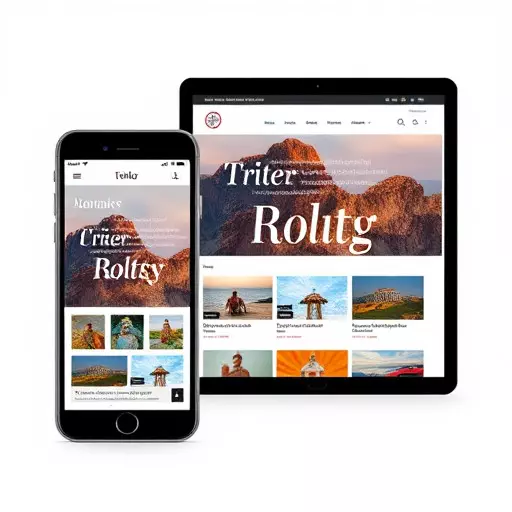In today's digital landscape, adopting mobile-first responsive design in New Jersey is key to delivering exceptional user experiences across all devices. This approach leverages adaptive web design techniques, including fluid grid layouts using percentages for dynamic resizing, and flexible images and media. Such methods improve accessibility, SEO, and align with Google's mobile-friendliness guidelines, making it an indispensable strategy for New Jersey businesses aiming to thrive online.
In today’s digital era, ensuring a seamless user experience across various devices is paramount. This is where Responsive Typography Techniques come into play, transforming the way we design websites for both mobile-first users in New Jersey and beyond. By adopting adaptive web design principles, such as fluid grid layouts and flexible images and media, designers can create engaging experiences that adapt gracefully to different screen sizes. These strategies not only enhance accessibility but also elevate the overall aesthetic of web content.

In today’s digital landscape, where users access websites from a variety of devices, implementing mobile-first responsive design in New Jersey is no longer an option but a necessity. Adaptive web design techniques like fluid grid layouts ensure that web pages seamlessly adjust to different screen sizes and resolutions, providing an optimal viewing experience regardless of whether the user is on a smartphone, tablet, or desktop computer. By adopting these strategies, designers can create a unified user interface that caters to diverse user needs without sacrificing aesthetics or functionality.
Fluid grid layouts are particularly effective in managing content and elements on a webpage. They use relative units like percentages instead of fixed pixels, allowing the layout to adapt dynamically based on the available space. Additionally, flexible images and media enable designs to scale gracefully, preventing pixelation or distortion on smaller screens. This approach not only enhances accessibility but also positions websites for success in search engine optimization (SEO), as Google and other major search engines prioritize mobile-friendly content.


